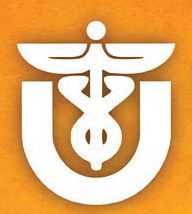Dr. Chris Davidson, interventional neuroradiologist with University Health Care, talks about five warning signs for stroke and what you need to do.
Stroke Statistics
• The chance of having a stroke more than doubles for each decade of life after age 55. While stroke is common among the elderly, a lot of people under 65 also have strokes.
• Stroke is more common in men than in women. However, more than half of total stroke deaths occur in women.
• Stroke is the nation’s third leading cause of death.
Types of Stroke
• An Ischemic stroke occurs as the result of an obstruction within a blood vessel supplying blood to the brain and accounts for about 83 percent of all cases.
• A Hemorrhagic stroke accounts for about 17 percent of stroke cases and is the result of a weakened blood vessel that ruptures and bleeds into the brain.
Recognize the Warning Signs of a Stroke – GIVE ME 5
• Learn to recognize the warning signs of stroke
o Walk – Is their balance off?
o Talk – Is their speech slurred or their face droopy?
o Reach – Is one side weak, numb, or unable to hold items?
o See – Is their vision all or partly lost or blacked out?
o Feel – Is their headache quite severe?
Call 911 immediately if you or someone you know experiences these symptoms.
Reduce Your Risk of Having a Stroke
• Control high blood pressure
• Stop smoking
• Maintain a healthy diet and exercise
• Manage diabetes, heart disease and cholesterol
The University Health Care Stroke Center and Brain Attack Team
• In 2005, the Stroke Center at University Hospital became a nationally certified Primary Stroke Center with a “Brain Attack” team who responds quickly to stroke victims brought to the ER. The team of neurologists, neurosurgeons, CT and MRI technicians, pharmacists, nurses, and neuroradiologists are on call around the clock.
• It’s crucial to get help within three hours of a stroke’s onset.
• A drug called tPA (tissue plasminogen activator) can be administered to people who’ve suffered ischemic strokes caused by blood clots. If it’s administered within three hours of the stroke’s onset, tPA actually can reverse brain damage.
• University Hospital has been recognized for its high standard of care with The American Stroke Association’s Get With The Guidelines—Stroke Gold Performance Achievement Award, which identifies programs that have developed a system for rapid diagnosis and comprehensive treatment of stroke patients.University Health Care’s Neurosciences Team
• At University Health Care, we have created the Intermountain Regions’ only dedicated Neurosciences specialty center to improve care for everyone with any type of disease, disorder, or injury to the brain, nervous system and spine.
• By bringing together the Departments of Neurology, Neurosurgery and Radiology, into a single center, we have improved our ability to:
o Work together to better care for patients with these conditions,
o Improve education for medical professionals, and
o Enhance research into the causes and possible treatments and cures.
For more information, visit www.healthcare.utah.edu.















Add comment